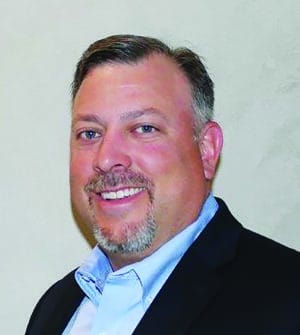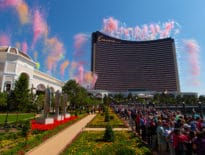Bryan Northrop
Executive vice president and general manager, Skanska building operations New England
Age: 43
Industry experience: 22 years
The Greater Boston building industry is in a state of transition as construction firms respond to strong demand for new development while adjusting to rising materials costs, labor shortages and sites that are increasingly vulnerable to climate change.
Bryan Northrop was promoted to general manager of Skanska building operations for the New England region in May. A Skanska employee for his entire career, Northrop’s experience includes such notable projects as the relocation of Dana-Farber Cancer Institute’s cell manipulation facility and the expansion of the Novartis campus in Cambridge. He’s currently overseeing such projects as Boston College’s new recreation center, the Brookline High School expansion and construction of the new Belmont High School. Northrop succeeds Kerim Evin, who was promoted to regional executive officer.
Q: Now that Encore Boston Harbor is completed, what effect will that have on the construction labor market?
A: It may help ease some of the tension in the market right now. Labor is relatively scarce from the trades’ perspective. Obviously, that was a massive project and we’ve already seen some of the folks from that job start to reintroduce themselves to the general marketplace. It’s helped in some regards, but there’s a lot of major work still going on in the city. We’re still going to feel some pressure and a little bit of a labor shortage. But it should improve. Some of the major subcontractors who were on that job had to be careful and they did limit some of their backlogs. There was a big drain on electricians, a lot of the finish trades.
Q: Did the National Grid lockout affect Skanska’s current projects?
A: A lot of projects across the Greater Boston area had a hard time getting temporary heat turned on in a timely fashion earlier this year. Trying to get gas service established was problematic. We did feel an impact. It didn’t really have an overall effect on our schedule. We got creative and found ways to work through it.
Q: Have projects been impacted by extreme weather events yet, and how is Skanska preparing for more of the same in areas such as the Seaport District?
A: After Superstorm Sandy, it’s on the radar screen now. In pockets, people were discussing rising tides, but I think that what you’ll see in an area like the Seaport, everybody’s talking about resiliency now.
Years ago, we would put critical electrical systems on the ground floor or in the basement because we wanted to put it in space that wasn’t high-value. Now we’re seeing that on the second or third floors. People are looking at portable dam systems that can keep water from entering, like a reverse moat, that could deploy during times of a major storm surge.
We were fortunate in the Seaport that the major storm a year ago, while it flooded the streets, all of the projects we were working on remained safe We didn’t have any major damage. It all starts in the design phase.
Q: How does the rising demand for lab-ready space and lab conversions affect the construction process?
A: The life science market is very strong in Cambridge and Greater Boston. We are seeing a lot of R&D and manufacturing and a pretty good uptick in the pharma manufacturing space. We do see people try to convert an office building to lab. It can be done, but there are some challenges.
If a developer is looking to construct a lab building, they are going to take into account the floor-to-floor heights. It’s going to be taller for lab because there’s denser mechanical and electrical infrastructure above the ceiling that needs to be accommodated: fume hoods and other equipment that recesses into the ceiling. If you’re just building for lab tenants, you’re going to make larger shafts that mechanical systems travel through that have greater capacity and access. We usually see buildings designed with larger capacity for air handling to accommodate for more air changes per hour.
With lab buildings, people have a lot to talk about as far as how far to take the design before they select a tenant. If they know the specific science, that makes it a lot easier. The second piece is we’re seeing a great deal of pharmaceutical manufacturing in Massachusetts and even down in Rhode Island. In the past, we saw a very heavy R&D element in pharma, but now we’re seeing more manufacturing. People want their clinical manufacturing to be closer to their R&D centers.
Q: How is Skanska addressing the issue of opioid abuse among tradespeople?
A: We’ve been talking about this for close to a year where it’s been on our radar. About nine months ago, we distributed Narcan on all of our project sites. We provided our teams with training on how to recognize folks suffering from drug and alcohol abuse. We provide information to our people, if someone on your site is suffering from an overdose and once you call first responders, how to treat the person.
It’s an epidemic in the construction industry, and I’m glad to see more people talking about it. Associated General Contractors has had workshops and conversations. The mayor challenged all construction sites to have Narcan available. It’s one step, but we’ve been working with medical providers and the workers letting them know how to ask for alternative treatments. There are other options. There are different physical therapies for pain management. And opioids should be used as a last resort for anybody who’s suffering from any pain.
Northrop’s Five Favorite Restaurants in the Seaport District:
- Ocean Prime
- Row 34
- Tuscan Kitchen
- Del Frisco’s Double Eagle Steakhouse
- The Smoke Shop BBQ




 |
| 

